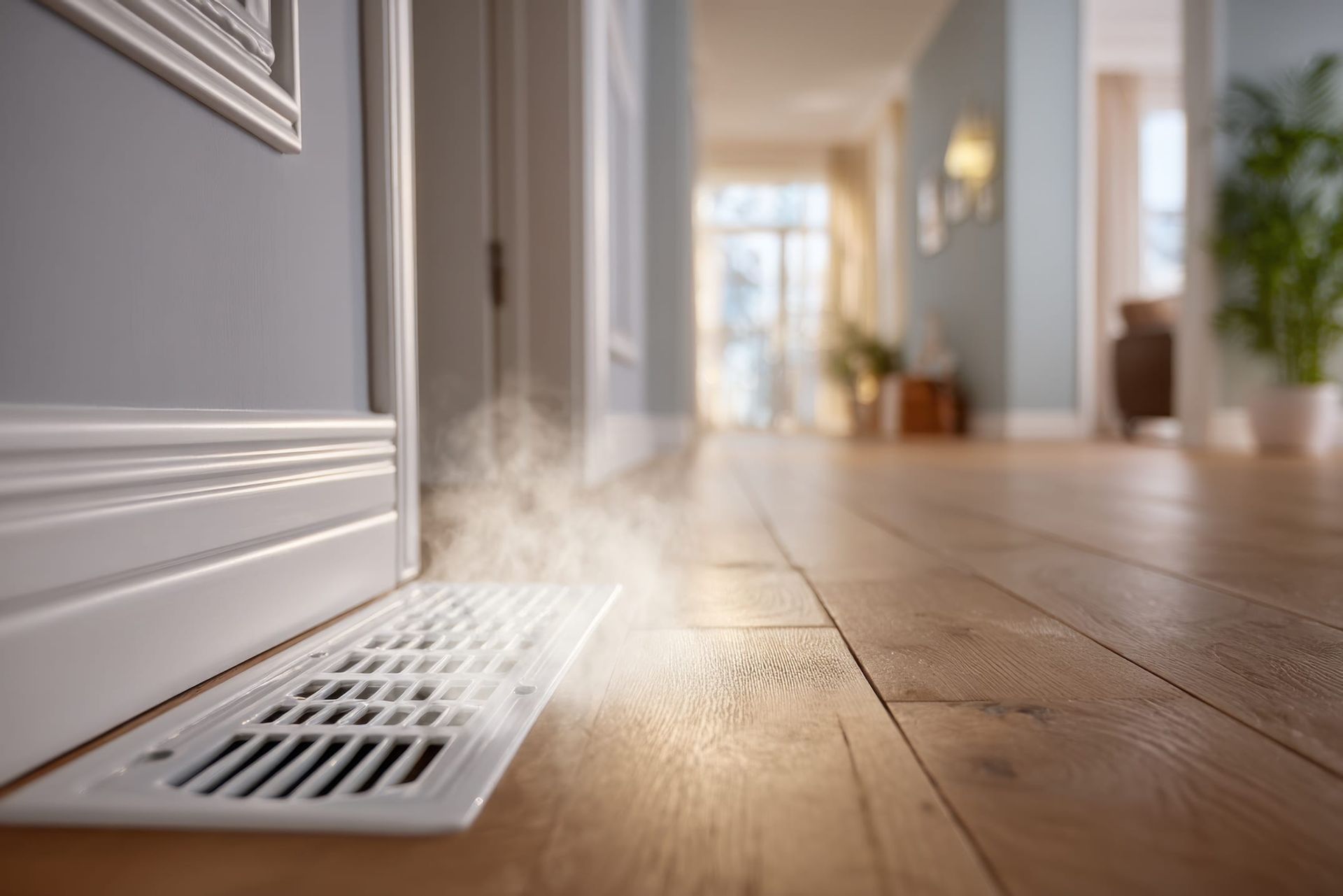Fix Mouldy Smells in Your AC Today
When your air conditioner kicks on and instead of clean, cool air, you get a sharp, musty smell in the room, it’s a sign something’s not right.
A mouldy odour coming from your AC isn’t just unpleasant. It can make the whole house feel damp and uninviting. For households in Canberra, where AC systems can go through months of regular use, these kinds of smells often pop up right around the middle or end of winter, when units may have stayed inactive for stretches or haven’t been cleaned since summer.
While it might seem like a minor issue, that mouldy smell usually means there’s more going on under the hood. Mould thrives where there’s moisture and poor airflow, both of which can easily happen inside an AC if it hasn’t been serviced in a while. Dealing with it sooner rather than later helps avoid bigger problems, both for your AC’s performance and for your health. Let’s take a closer look at what causes this smell and what you can do about it.
Understanding Why Your AC Unit Smells Like Mould
That musty smell coming through the vents isn’t something you want to get used to. It tends to build up slowly, becoming more noticeable when the system’s first turned on after a period of low use. In most cases, the smell signals mould or mildew growing somewhere inside your air conditioning system.
Your AC creates condensation as it runs, and that moisture has to go somewhere. Normally, it drains away through pipes or drip trays. But over time, if water gets trapped or doesn’t drain properly, it creates the perfect spot for mould to grow. Add to that a bit of dust or organic material on a dirty filter or within the ducts, and you’ve got exactly the kind of environment mould loves. The issue can be even more common when changing seasons. For example, after winter, when the air’s cold and damp, switching back to cooling mode can bring out those hidden smells.
Even if the system is technically working, blowing out air and cooling the room, a mouldy smell means the air isn’t clean. It’s picking up particles as it moves through the system and then spreading them around your home. That can make things unpleasant fast, not just because of the smell but because mould spores can also affect your health. Instead of covering the smell with air fresheners or sprays, get to the root of where it’s coming from. Usually, that means understanding where the moisture is sitting and clearing it out properly.
Causes Of Mouldy Smells In AC Units
There are a few main reasons why your AC could be giving off that stale or mouldy smell. Most of them come down to moisture and poor cleaning. Here are the usual suspects:
- Blocked or dirty filters: When filters aren’t cleaned or swapped out on schedule, dust, dirt, and moisture build up. Over time, that damp mix becomes an ideal home for mould.
- Excess condensation: AC units produce condensation, particularly during warmer months. If the drain lines are blocked or there’s a leak, the collected water doesn’t drain properly, allowing mould and mildew to grow.
- Damp drip tray or pan: Water collects in the drip tray while the unit is running. If it's not emptied or cleaned often, it can gather dust and debris, creating bad smells.
- Clogged drain lines: These are meant to carry away the water your system pulls from the air. If they get blocked, water backs up and sits in places it shouldn’t.
- Low airflow: Poor airflow can stop moisture from drying properly inside the unit. Mould loves this kind of environment and will start to grow if left long enough.
Think of your AC like a wet sponge. If it’s left in a dark corner with no chance to dry out, it’ll start to smell. Your unit works the same way. Keeping each part clean and making sure air is flowing freely helps keep mould at bay.
In Canberra households especially, where winter can bring damp conditions, AC systems often switch between heating and cooling. This movement between warm and cool air can make moisture collect faster inside the unit. If filters or drain areas are already dirty, mould can grow quickly. Regular checks can stop this problem before it starts.
Health Risks Associated With Mouldy AC Units
It’s easy to dismiss a weird smell as nothing more than a nuisance, but when that odour is mould, the effects can reach far beyond just being unpleasant. Breathing in air that carries mould spores can cause a mix of health problems, especially for people with asthma, allergies, or already sensitive lungs. Kids and elderly family members are often the first to feel discomfort. Even if no one at home has a chronic condition, mould exposure over time can lead to coughing, sneezing, or a persistent scratchy throat.
In some homes, people may even notice more headaches or feel drained without linking it to the AC. It's not because the cooling isn't working well, but because the air itself isn't clean. Mould that develops inside your system doesn't just stay put. As the unit pushes air through the vents, those spores can spread from room to room. Since Canberra winters are already dry and enclosed environments keep windows shut, this can lower indoor air quality even faster.
If your AC carries a mouldy smell, it’s smart to act quickly. The longer you let it go, the harder it becomes to clean up properly. Taking early steps, even while it’s still cold out and the unit isn’t doing much cooling, can help reduce the health risks for everyone in the house.
Steps To Fix Mouldy Smells In Your AC
Getting rid of that musty smell means going after what's causing it inside the unit. Changing air fresheners or popping a deodoriser in the room just masks the issue. If you want clean-smelling air again, you'll need to treat the mould at its source. Here’s a basic rundown of steps to help move things in the right direction:
1. Inspect and clean the filter: Filters trap dirt, dust, and hair. If they get wet or clogged, mould can grow right on them. Swap them out or have them professionally cleaned on a regular schedule.
2. Check for standing water: Look in and around the unit for water puddles or signs of moisture you wouldn’t expect. That includes around drip trays and the floor beneath the indoor unit.
3. Clean coils and drip pans: Evaporator coils gather moisture from the air. Drip pans collect this water, and if not cleaned, they become a breeding place for mould. These areas need to be cleared of any slime, build-up, or debris.
4. Improve airflow around the system: Good ventilation stops dampness from settling. Keep furniture, rugs, or curtains from blocking vents or grills nearby.
5. Schedule a check-up: While surface cleaning is part of regular upkeep, deeper issues might not be visible. If mould keeps coming back or the smell doesn’t fade, it might be time to book a professional to take a closer look.
This list covers small steps you can take to help things along, but effective mould removal often needs more than surface-level cleaning. In most cases, if the smell is strong or widespread, it’s safest to leave it in the hands of trained technicians.
Preventing Future Mould Growth In Your AC
Once your AC smells clean again, the goal is to keep it that way. Mould loves to find its way back into dirty or damp spots, so it helps to be proactive with care. In Canberra, switching from heating to cooling and back again creates just enough fluctuation inside the system to make moisture stick around. With that in mind, here are a few habits that go a long way toward prevention:
- Stick to a set cleaning schedule for filters and exterior vents
- Don’t ignore strange smells, even if they fade during the day
- Keep a clear space around the indoor and outdoor units
- Run the system every now and then during off-seasons to keep air moving
- Get your unit serviced regularly, especially just after heavy usage months
Using your AC correctly also matters. Don’t blast it to its coldest setting right away, especially after it's been off for weeks. Gradually adjusting the temperature puts less moisture into the system all at once, giving water a better chance to drain out properly.
The good news is that mould isn’t inevitable. With long-term care and small adjustments, most systems can stay clean, dry, and odour-free. Doing a little now helps you avoid much bigger issues down the track.
Breathe Easy With A Mould-Free AC In Canberra
Bad smells from your AC aren’t just annoying. They’re your system’s way of telling you something needs attention. Whether it’s trapped water, a dirty filter, or poor airflow, mould usually doesn’t show up without a reason. Once the smell creeps in, it only spreads with time, bringing health concerns and irritating airflow along with it.
Staying ahead of the problem means looking after your unit throughout the year. For Canberra locals, that means paying extra attention during winter and early spring, when damp conditions and uneven usage can make mould more likely. Focus on proper cleaning, routine checks, and early intervention to keep your home free from unwanted smells and the health problems that follow. When in doubt, getting help with air conditioning services is always the smarter move. It saves time, protects your system, and keeps your air fresh.
For Canberra residents ready to enjoy a fresh and clean indoor atmosphere, addressing those mouldy AC issues is key. It's important to keep your air conditioning system running smoothly and your home comfortable. If it's time for expert advice or assistance with air conditioning services, AGA Air Conditioning is ready to help your household breathe easier with our professional and reliable services.



